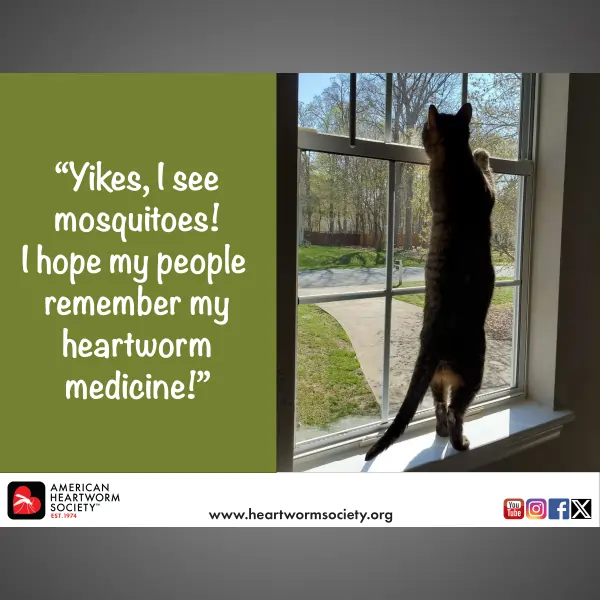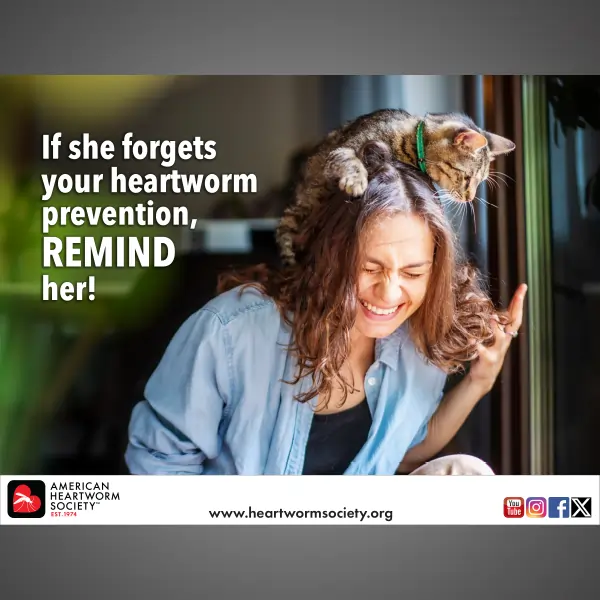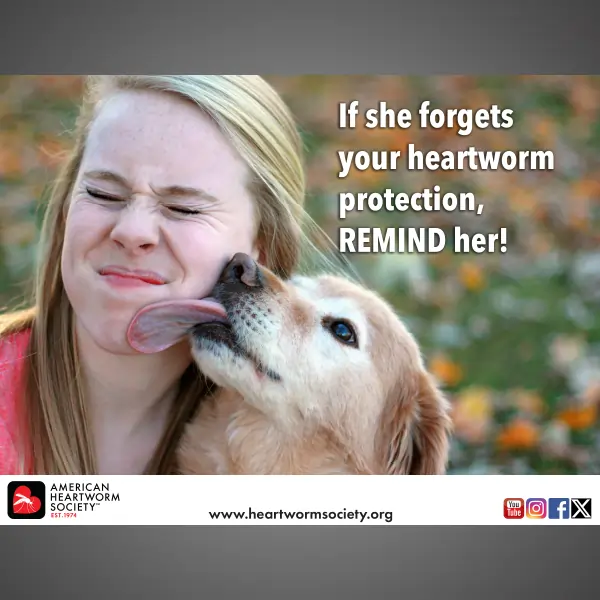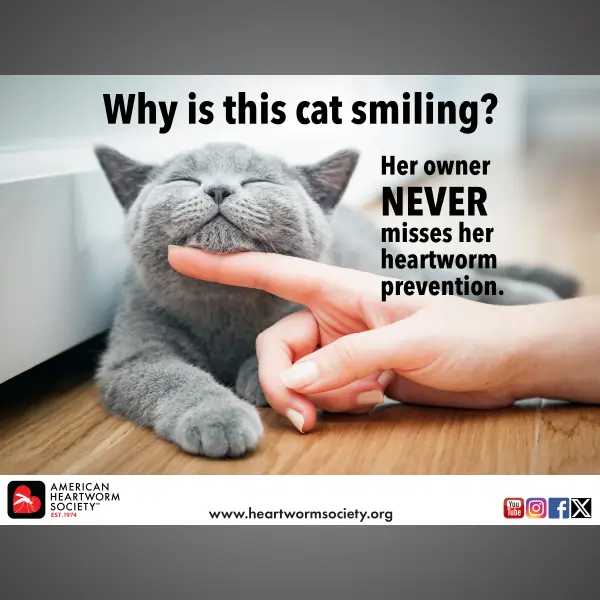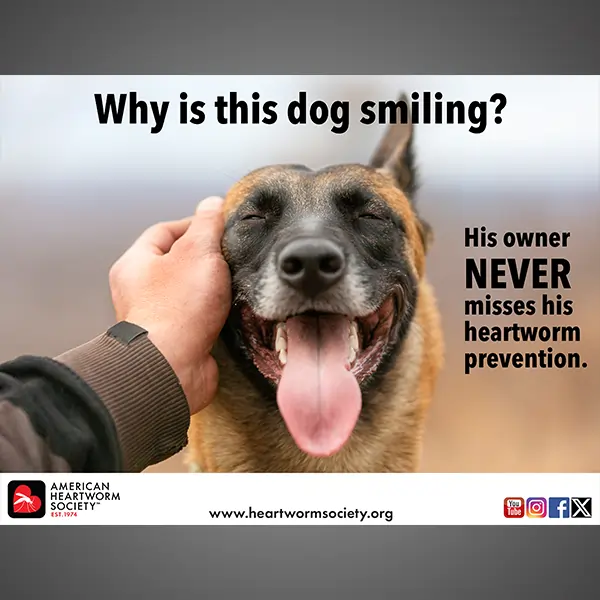Wilmington, Delaware — While the first robin is considered a welcome sign of spring, the season’s first mosquito is heralded with less enthusiasm. But welcome or not, dog and cat owners need to know that mosquitoes and deadly heartworm disease go together—and pets are at risk if they aren’t given heartworm preventative year round.
“Across the country, veterinarians are telling us that the mild winter of 2012 has created ideal conditions for an early crop of mosquitoes”, says Sheldon Rubin, DVM, of the American Heartworm Society (AHS). “Unfortunately”, he adds, “these mosquito-friendly conditions are hitting at a time when far too many pets are unprotected and vulnerable to heartworm infection.”
“Studies show that less than half of dog owners in the U.S. routinely buy heartworm medication for their dogs, while the percentage of cat owners protecting their pets is even lower,”1 says Dr. Rubin. “Meanwhile, among those owners giving medication, most do not administer the medication year-round.”2
The American Heartworm Society recommends year-round protection for all pets, as well as annual heartworm testing. “Heartworm disease is everywhere—in fact, it’s
Been identified in all fifty states,” says Dr. Rubin. “In addition, it’s virtually impossible to predict when and where conditions will favor the spread of the disease.” AHS conducted a nationwide incidence survey of 5,000 veterinary clinics across the country in 2010, and found heartworm-positive pets in virtually every county and parish. Multiple variables, from microclimates to the presence of wildlife carriers, cause rates of infection to vary dramatically, even within communities.
“Year-round protection is that much more important, because we never know when mosquitoes will emerge in the spring or how late into fall they’ll hang around,” Dr.
Rubin explains, adding that warm-weather locales face the threat of infected mosquitoes throughout the year.
The good news, says the veterinarian, is that heartworm preventatives are relatively inexpensive and easy to administer. “With prevention so readily available, there’s no reason why we can’t significantly increase the percentage of protected pets while decreasing the incidence of this deadly disease,” Dr. Rubin says. “If an owner’s pet isn’t on already on prevention, now is the time to start.”
For more information on heartworm disease, visit www.heartwormsociety.org.
1American Animal Hospital Association State of the Industry 2010 Review.
2VetInsite Analytics, MAT December, 2010.
About the American Heartworm Society
The mission of the American Heartworm Society is to lead the veterinary profession and the public in understanding of heartworm disease. Founded during the Heartworm Symposium of 1974, the American Heartworm Society aims to further scientific progress in the study of heartworm disease, inform its members of new developments and encourage and help promote effective procedures for diagnosis, treatment and prevention of heartworm disease.




